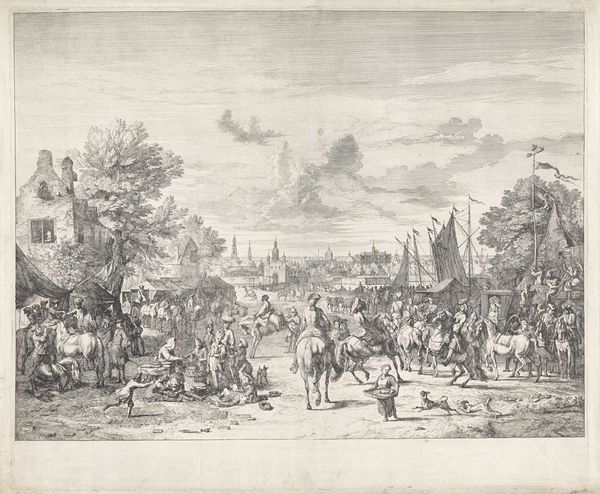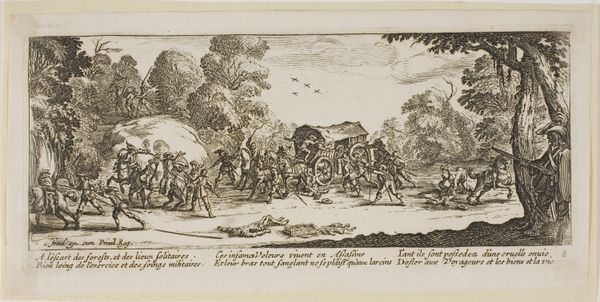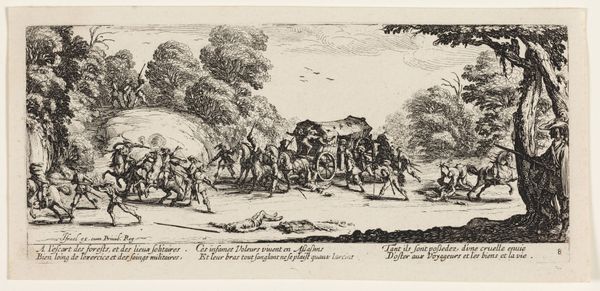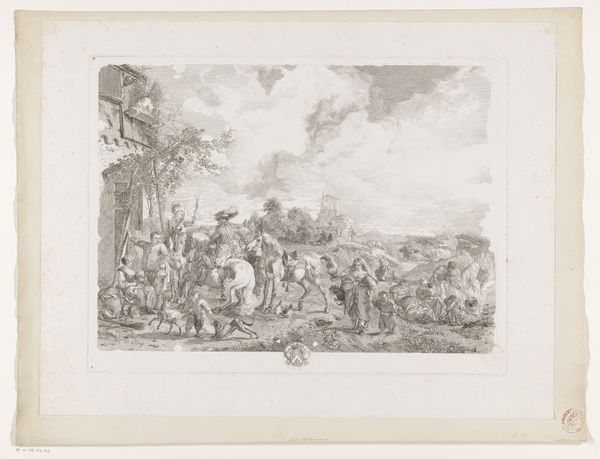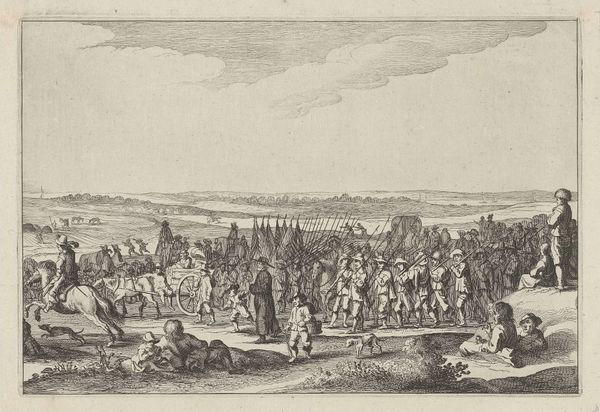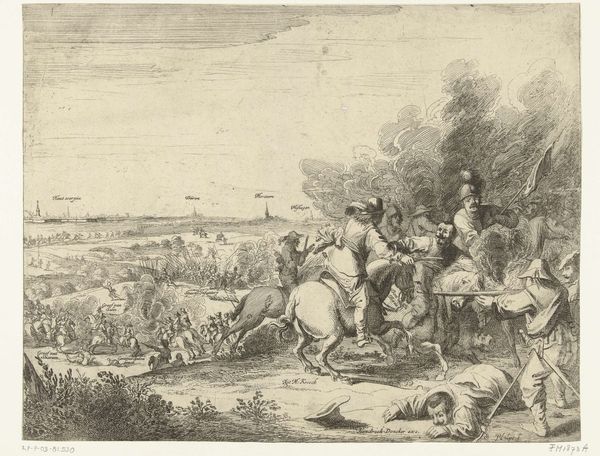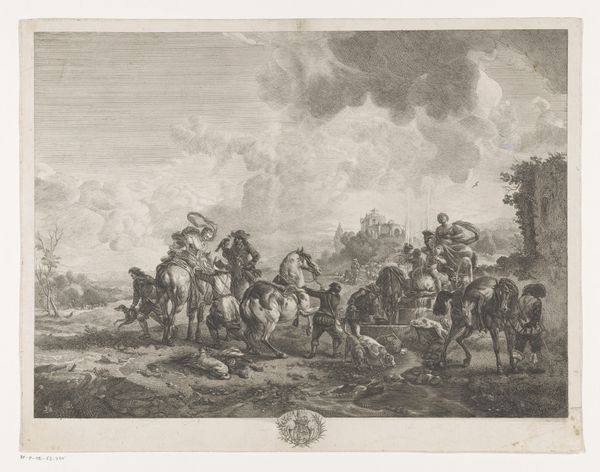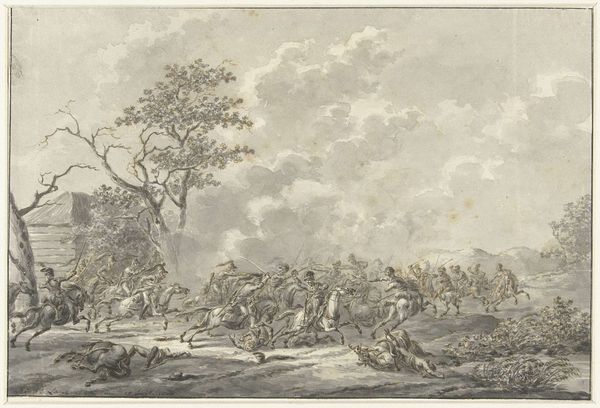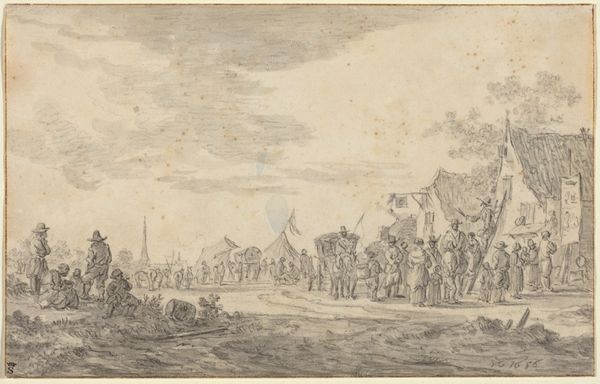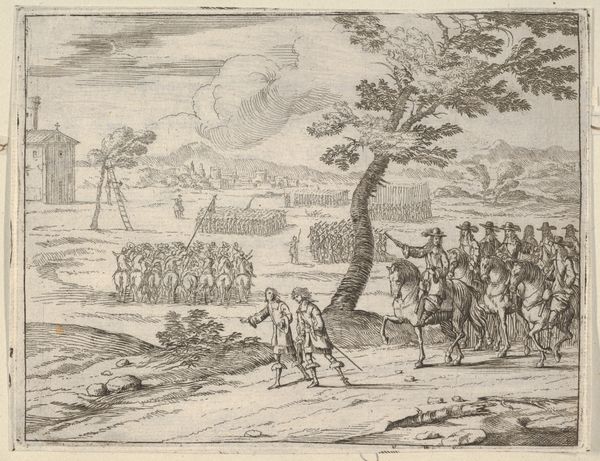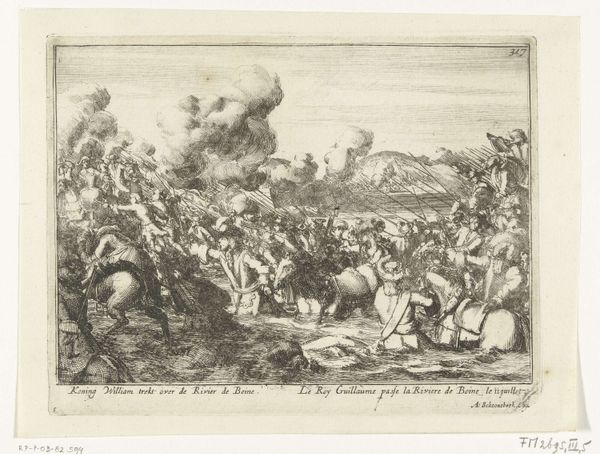
print, etching
#
baroque
# print
#
etching
#
landscape
#
figuration
#
history-painting
Dimensions: height 105 mm, width 138 mm
Copyright: Rijks Museum: Open Domain
Curator: Before us is "Veldslag met ruiters, twee kanonnen op de voorgrond," which translates to "Battle with Riders, Two Cannons in the Foreground." This etching, created by Johann Wilhelm Baur sometime between 1631 and 1637, offers a glimpse into 17th-century warfare. Editor: My first impression is that the image is both chaotic and meticulously crafted. The composition feels… well, fraught. You see all these figures in combat depicted through such fine lines—it’s like capturing violence through lace. Curator: That contrast is quite striking. Baur's work here is particularly fascinating from a historical standpoint, because of the level of detail given to weaponry and military formation, and also what that says about baroque landscape painting as a genre that so often depicted themes of power. We can see clear attention given to the cannon design and the cavalry positioning. Editor: Exactly. And that's where it becomes complicated. This isn't just some removed historical document. By portraying the instruments and tactics of war with this level of artistry, it arguably glamorizes the violence of it. How do we reckon with an aesthetic rendering that indirectly valorizes the apparatus of oppression? Curator: It’s a valid point, and one frequently raised when considering similar historical depictions. Consider also though how these images circulated. Prints like these helped disseminate military knowledge and strategies across Europe, impacting political relations and warfare. They served a crucial function beyond simple aesthetic pleasure. Editor: Perhaps. It still troubles me. There's something unsettling about transforming scenes of conflict and probable human suffering into an elegant, easily consumable visual. It reminds me of how these images serve to reinforce power dynamics. Curator: It is difficult. Baur's technique in the etching adds depth despite being black and white; he used the landscape backdrop to suggest further fighting in the distance. As a reflection of history, art becomes a means of engaging, perhaps even grappling with, the complexities and consequences of war and social struggle. Editor: Ultimately, examining pieces like this prompts essential conversations. It’s crucial that we engage art not only aesthetically, but also critically, confronting how historical events were presented, consumed, and legitimized through art. Curator: Precisely. Art history offers an access point to that critique, allowing us to understand the past while challenging the narrative in the present.
Comments
No comments
Be the first to comment and join the conversation on the ultimate creative platform.
